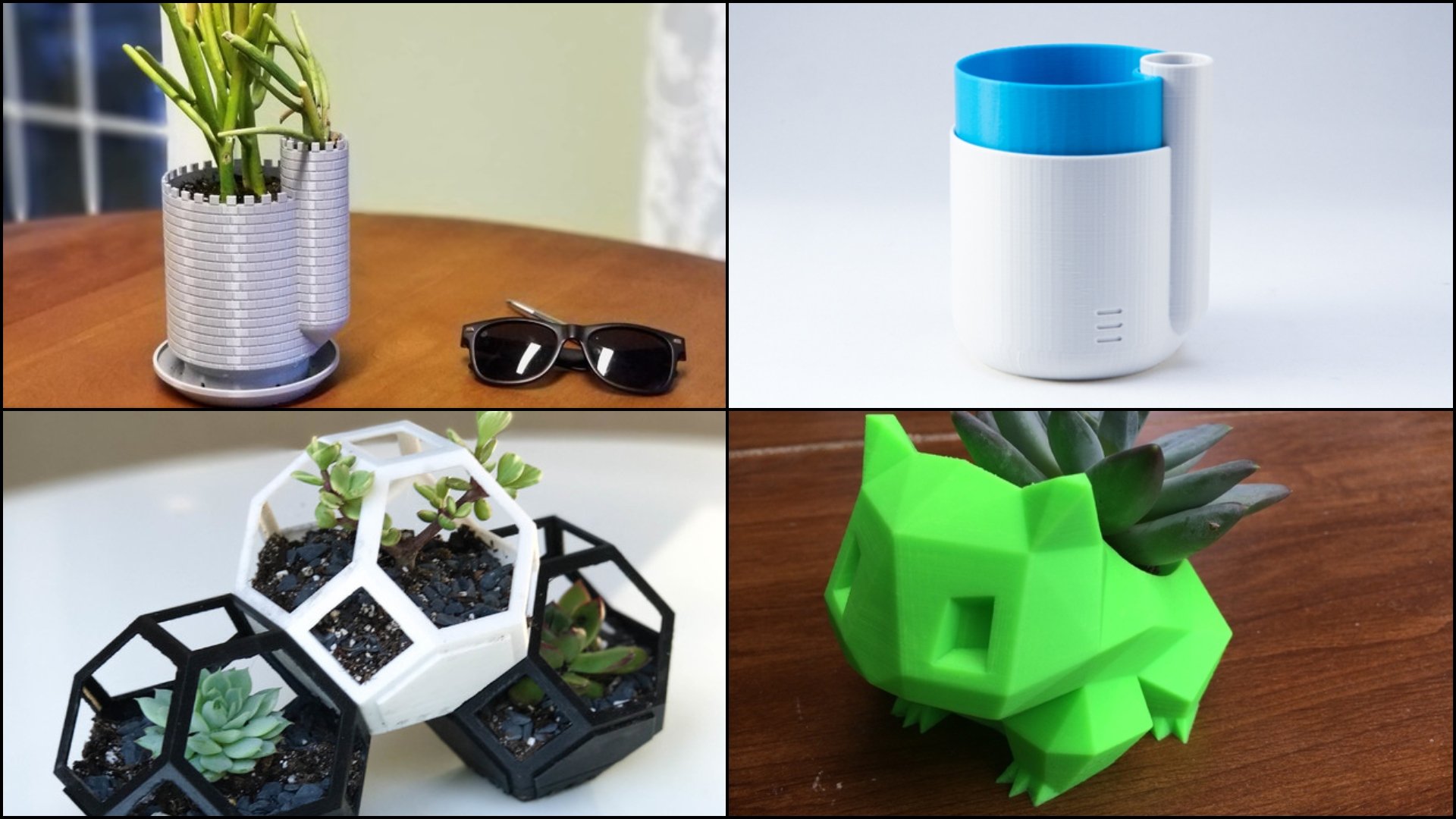3D print wall planters are a unique and innovative way to add greenery to your home. With a wide range of materials, designs, and printing techniques available, you can create custom planters that perfectly complement your décor. Whether you’re a seasoned 3D printing enthusiast or just starting out, this guide will provide you with all the information you need to create beautiful and functional wall planters.
In this guide, we’ll discuss the different types of materials used for 3D printing wall planters, such as PLA, ABS, and PETG. We’ll also explore the various design options available, including geometric shapes, organic forms, and customized patterns. Finally, we’ll provide tips for printing and finishing your wall planters, as well as ideas for how to install them in your home.
Materials and Design

3D printing technology has revolutionized the design and production of wall planters, offering a wide range of materials and design options to suit diverse tastes and preferences.
One of the most commonly used materials for 3D printed wall planters is PLA (polylactic acid), a biodegradable and environmentally friendly thermoplastic derived from renewable resources such as corn starch or sugarcane. PLA is known for its ease of printing, low shrinkage, and good mechanical properties, making it suitable for both indoor and outdoor use.
ABS (acrylonitrile butadiene styrene) is another popular material for 3D printed wall planters. ABS is a strong and durable thermoplastic with good resistance to heat and chemicals. It is often used for planters that require higher durability, such as those intended for outdoor use or in areas with high foot traffic.
PETG (polyethylene terephthalate glycol) is a thermoplastic that combines the advantages of PLA and ABS. PETG is strong, durable, and has good resistance to UV rays, making it suitable for both indoor and outdoor use. It is also food-safe, which makes it a good choice for planters intended for growing edible plants.
Design Options
3D printing technology allows for a wide range of design options for wall planters, from simple geometric shapes to intricate organic forms. Geometric shapes, such as cubes, spheres, and pyramids, provide a modern and minimalist aesthetic. Organic forms, inspired by nature, offer a more whimsical and artistic touch.
Customized patterns and textures can also be incorporated into 3D printed wall planters. This allows for the creation of unique and personalized designs that reflect the individual’s style or complement the décor of the surrounding space.
Some innovative and visually appealing designs for 3D printed wall planters include:
- Planters with built-in irrigation systems, which automatically water the plants, reducing the need for manual watering.
- Planters with integrated lighting, which provide additional illumination for the plants and create a unique visual effect.
- Planters with self-watering reservoirs, which store water and release it gradually to the plants, ensuring consistent hydration.
- Planters with modular designs, which allow for easy assembly and disassembly, making them convenient for storage and transportation.
Printing Techniques and Considerations: 3d Print Wall Planter

3D printing techniques employed in the fabrication of wall planters encompass various methods, each offering unique advantages and considerations. Among these techniques are Fused Deposition Modeling (FDM) and Stereolithography (SLA).
Fused Deposition Modeling (FDM)
FDM is a widely accessible 3D printing technique that utilizes a heated nozzle to deposit molten thermoplastic material layer by layer, building the planter’s structure. This method allows for the use of diverse materials, including PLA, ABS, and TPU, offering a range of properties such as durability, flexibility, and heat resistance.
- Optimal Print Settings: FDM printing involves optimizing parameters like layer height, infill density, and printing speed to achieve high-quality results. Typically, a layer height of 0.2-0.3 mm, an infill density of 20-40%, and a printing speed of 30-60 mm/s yield satisfactory outcomes.
- Troubleshooting: Common FDM printing issues include warping, stringing, and poor layer adhesion. Warping can be minimized by using a heated bed and brim. Stringing can be reduced by adjusting retraction settings and printing at a lower temperature. Poor layer adhesion can be addressed by cleaning the print bed and ensuring proper nozzle temperature.
Stereolithography (SLA)
SLA is a high-precision 3D printing technique that utilizes a laser to cure liquid resin layer by layer, resulting in smooth and intricate prints. This method offers exceptional surface quality and dimensional accuracy, making it suitable for creating detailed and aesthetically pleasing wall planters.
- Optimal Print Settings: SLA printing requires specific settings, including laser power, exposure time, and layer thickness. Optimal values vary depending on the resin used. Typically, a laser power of 50-100 mW, an exposure time of 5-15 seconds per layer, and a layer thickness of 0.05-0.1 mm yield high-quality prints.
- Troubleshooting: Common SLA printing issues include uncured resin, delamination, and warping. Uncured resin can be minimized by increasing exposure time or laser power. Delamination can be reduced by ensuring proper bed leveling and using a resin with good adhesion properties. Warping can be addressed by adding supports to the print model.
Finishing and Installation

Finishing techniques can enhance the appearance and durability of 3D printed wall planters. Sanding smoothes the surface, removing any rough edges or imperfections. Painting adds color and can create a variety of textures. Glazing provides a glossy finish and can protect the planter from moisture and UV damage.
Installation, 3d print wall planter
Proper installation ensures the planter remains secure and stable. Choose mounting hardware appropriate for the weight of the planter and the surface it will be attached to. Use screws or nails to fix the planter to the wall, ensuring they are driven into studs for maximum support. Consider using a level to ensure the planter is hung evenly.
Interior Design Styles
3D printed wall planters can complement various interior design styles. They can add a modern touch to minimalist spaces, provide a natural element to bohemian or rustic settings, or create a playful accent in eclectic or contemporary environments.
